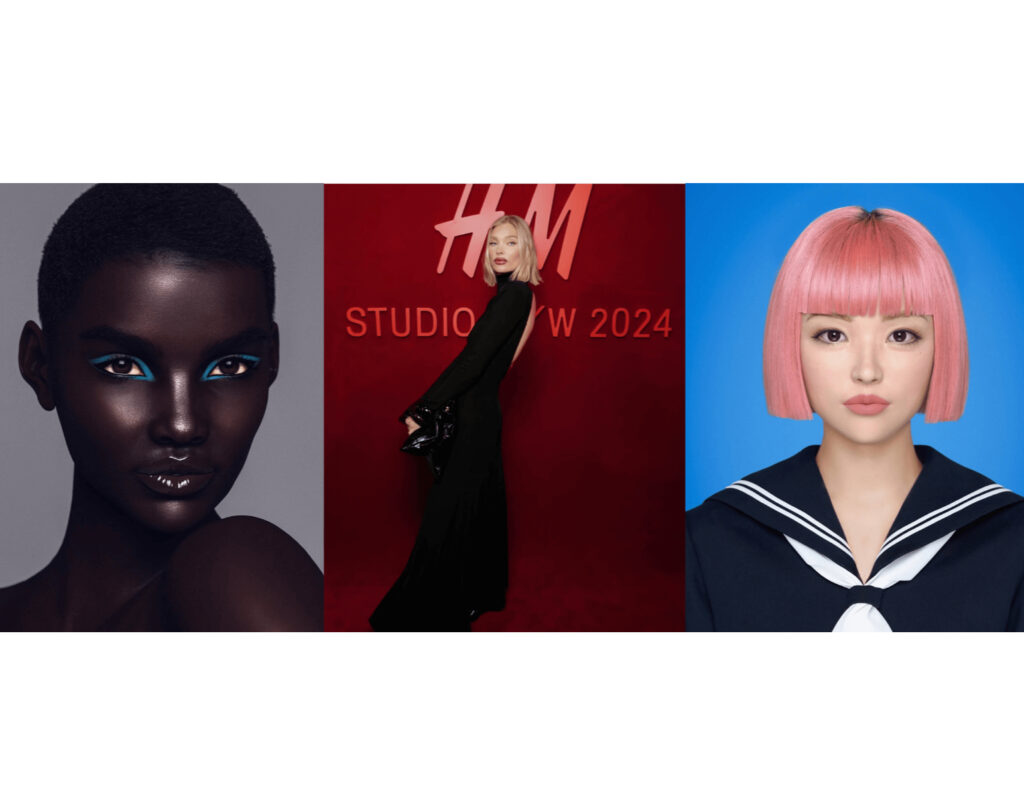As artificial intelligence reshapes every seam of the fashion industry—from design to modeling to marketing—a new aesthetic age is dawning. But with innovation comes complexity. The future of fashion demands a reckoning with ethics, identity, and the value of human creativity.
For centuries, fashion has thrived as a celebration of human creativity. From draped silks in ancient courts to couture-clad runways in Paris, this industry has always been powered by people: designers sketching visions, models embodying beauty, photographers capturing fleeting moments, stylists constructing identity through texture and form. Technology served as a faithful assistant—supporting the craft through software, logistics, and e-commerce—but it never led the creative charge.
That paradigm, however, is beginning to unravel.
Today, fashion is entering an accelerated phase of technological disruption, led by artificial intelligence (AI). No longer relegated to background tasks, AI is now assuming central creative roles. It’s not just tracking trends or managing supply chains—it’s designing garments, selecting color palettes, writing product descriptions, and even replacing human models. These shifts are not theoretical or distant; they are already reshaping the industry from the inside out.
Stradivarius and the New Synthetic Vision
A signal moment arrived with Stradivarius, a brand under the Inditex empire, which launched its Spring/Summer 2023 campaign with an unapologetically futuristic twist. Instead of traditional backdrops and live photoshoots, the campaign featured dreamlike landscapes and synthetic models—all created using AI. The clothes were real. Everything else—the faces, the lighting, the settings—existed only in code.
This leap offered more than just cost or time savings. It posed a provocative creative question: If you could design reality from scratch, what would beauty look like? In Stradivarius’s case, the answer was ethereal, hyperreal, and frictionless. Their campaign demonstrated how AI can extend artistic vision beyond physical and temporal limits, allowing brands to sculpt visual worlds with digital brushstrokes.
A New Face of Fashion: AI Models on the Rise
But beneath the glamour of digital innovation lies a deeper, more contentious transformation—one that touches the very identity of the modeling industry. AI-generated models are beginning to populate the fashion landscape, and their arrival has sparked both excitement and anxiety.
Take Levi’s, for example. In 2023, the iconic American denim brand collaborated with Lalaland.ai, a digital modeling agency specializing in hyper-realistic AI avatars. Unlike traditional models, these figures don’t need breaks, don’t age, and can be endlessly customized to reflect any body type or ethnicity. According to Levi’s, the partnership wasn’t about slashing costs. It was about diversity—showing consumers a broader range of bodies, identities, and representations.
The logic is clear: in an era obsessed with personalization, why not allow each shopper to see how jeans might look on their body shape, skin tone, or height? Yet even this progressive intent stirred debate. Critics questioned whether simulated inclusivity could truly replace the nuance and lived experience of real representation. When does diversity become a digital façade?
H&M and the Ethical Edge of Innovation
H&M upped the ante in 2024 by unveiling digital replicas of 30 real-life models. This initiative—billed as a tool for faster campaign creation and global consistency—raised both eyebrows and ethical concerns. These avatars weren’t simply static images; they moved, emoted, and posed like their human counterparts, powered by motion-capture technology and generative AI.
The brand was quick to emphasize that models retained rights over their digital doubles, deciding how and when they would be used. This detail proved essential. Without such protections, the creation of a digital twin could easily slip into exploitation, allowing brands to repurpose a model’s likeness indefinitely and independently of their consent.
Yet for the creative workforce—makeup artists, photographers, lighting techs, even set designers—the alarm bells were deafening. If digital avatars and AI-rendered environments replace physical shoots, what happens to the thousands of professionals who bring a photoshoot to life? The fear is not unfounded. As automation accelerates, the question shifts from what AI can do to what should be left to humans.
Virtual Stars with Real-World Influence
If Stradivarius, Levi’s, and H&M reveal how brands are embracing AI, then digital models like Shudu and Imma show how these virtual creations are becoming stars in their own right.
Shudu, often referred to as the world’s first digital supermodel, was created in 2017 by photographer Cameron-James Wilson. Her elegance and strikingly real features earned her collaborations with Balmain, Fenty Beauty, and more. She dazzled the public—but also drew backlash. As a white male creator profiting from a dark-skinned female avatar, Wilson was accused of co-opting Black beauty while avoiding the systemic issues faced by real Black models.
Imma, a Japanese virtual influencer developed by Aww Inc., takes a different route. With neon-pink hair and futuristic fashion sense, Imma has modeled for Dior, Porsche, and Valentino. She’s amassed a massive following on social media, acting like a digital celebrity who never sleeps. For many brands, she’s the ideal ambassador: consistent, malleable, and controversy-free—until questions of authenticity arise.
These figures—crafted from pixels, not DNA—may not breathe, but they influence. They set trends. They redefine beauty. And they challenge our very understanding of what it means to be “real” in an era where digital perfection often outshines human imperfection.
The Consumer’s Dilemma: Perception and Impact
With AI-generated visuals now indistinguishable from real photography, the psychological impact on consumers—especially young, impressionable audiences—is a rising concern.
What happens when the dominant beauty archetype is no longer human? Digital models, by design, can be optimized to perfection. No pores, no asymmetry, no aging. If these avatars become the new standard, how will that affect people’s self-image, especially in a world already shaped by filters, FaceTune, and hyper-curated social media personas?
Research into social comparison suggests that unrealistic images—AI or otherwise—can negatively impact mental health, fueling body dysmorphia, eating disorders, and depression. In response, some activists argue for labeling AI-created images or setting clear ethical guidelines for digital models. The fashion world must ask itself: is it ready to prioritize well-being over engagement metrics?
Owning the Future: Rights, Identity, and Regulation
H&M’s promise to give human models control over their digital twins marks an important shift. As more creators digitize their bodies, faces, and voices, legal frameworks must evolve to protect ownership and usage rights. The fashion industry could become a test case for broader discussions about virtual identity—who owns a likeness? Who profits from it? Who decides how it is used?
AI brings opportunities, yes—but without regulation, it also invites exploitation. Just as the music industry had to adapt to streaming and digital sampling, fashion must now confront the complexities of content ownership in the age of virtual replication.
Human Creativity, Reimagined
Despite the dystopian narratives, AI is not inherently destructive. In fact, it could usher in a golden age of augmented creativity. For designers, tools like DALL·E, Midjourney, or Clo3D can generate mood boards, simulate textures, or render 3D prototypes in minutes. AI can help brands test sustainability models, reduce textile waste, and tailor clothes to individual body scans. With the right intentions, it’s a partner—not a rival.
The challenge, then, is not about resisting AI but about embedding it within a human-centered value system. Let AI enhance what humans imagine—not replace it. Let it amplify creativity—not flatten it into algorithmic sameness.
Impression
Fashion has always been a mirror of society—its hopes, its contradictions, its dreams. And now, as technology transforms what we wear and how we see ourselves, that mirror reflects a critical choice. Will we use AI to democratize beauty, expand inclusion, and foster innovation? Or will we let it deepen inequality, erase human labor, and standardize self-expression?
Only then can we stitch together a smarter, more inclusive, and sustainable industry—one pixel, one thread, and one decision at a time.
No comments yet.








